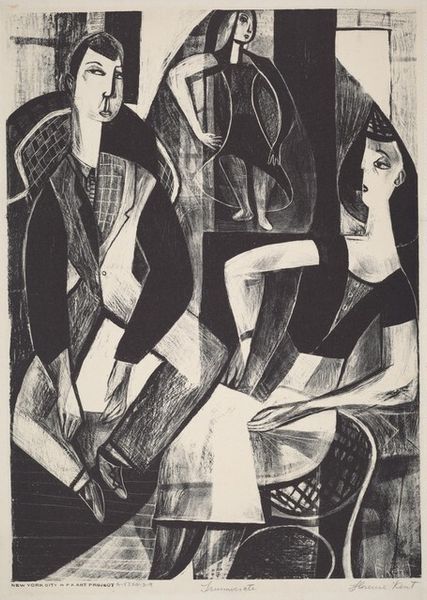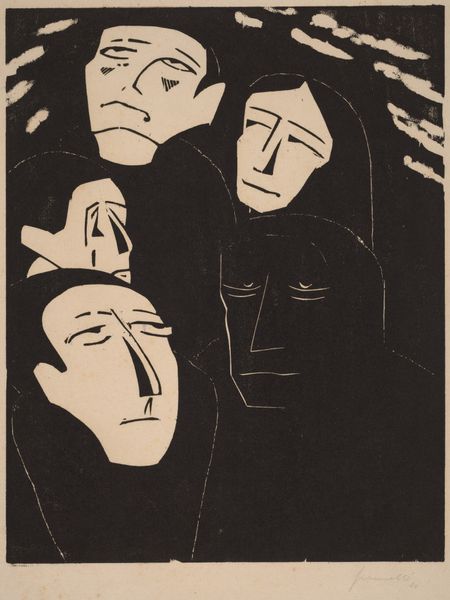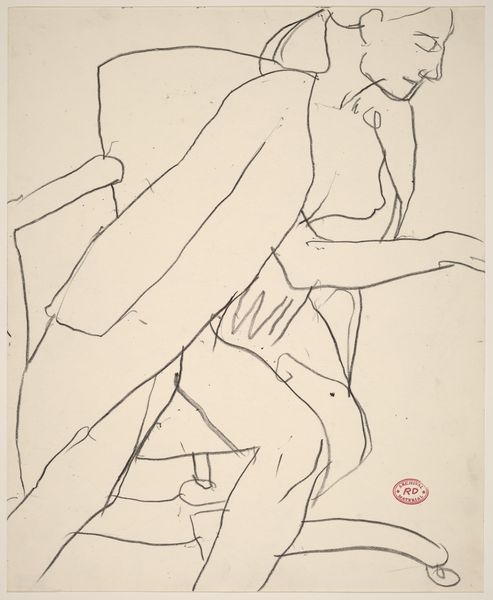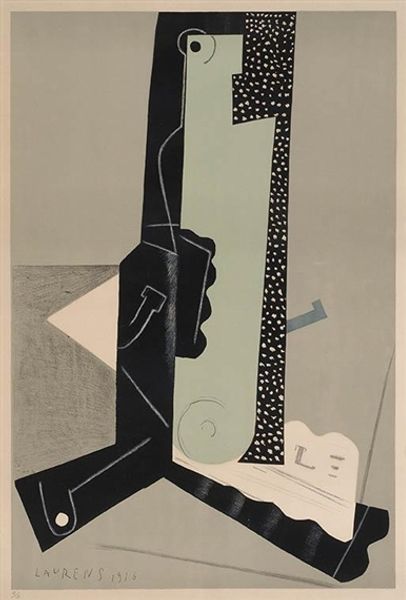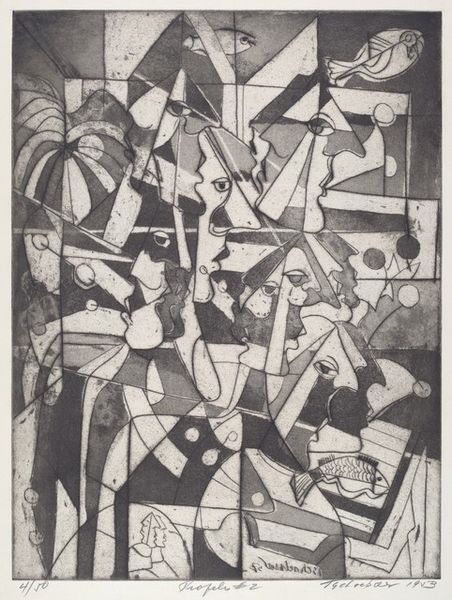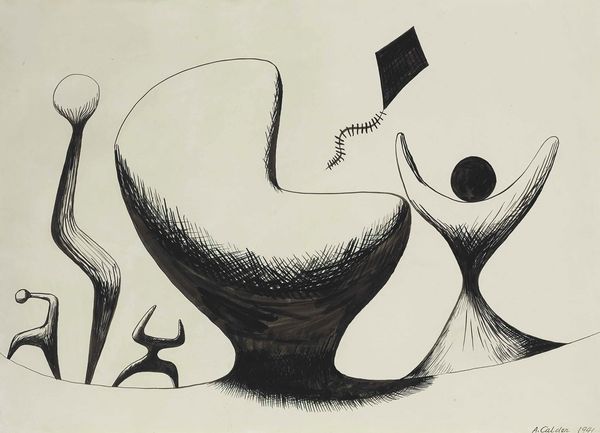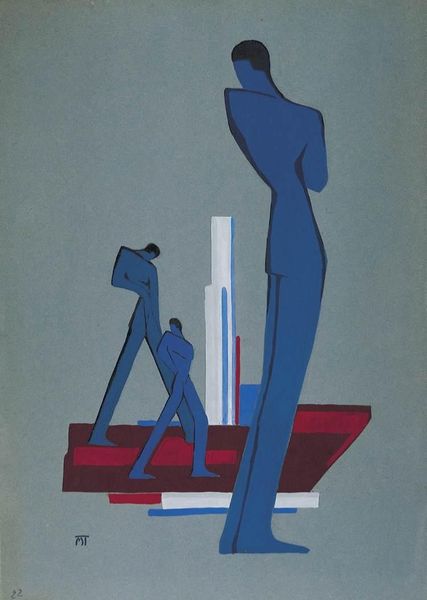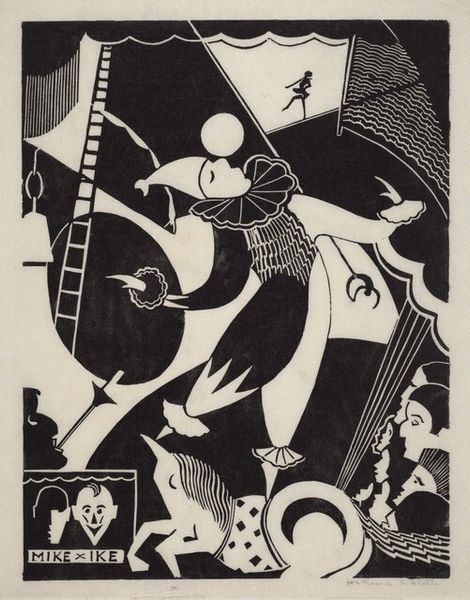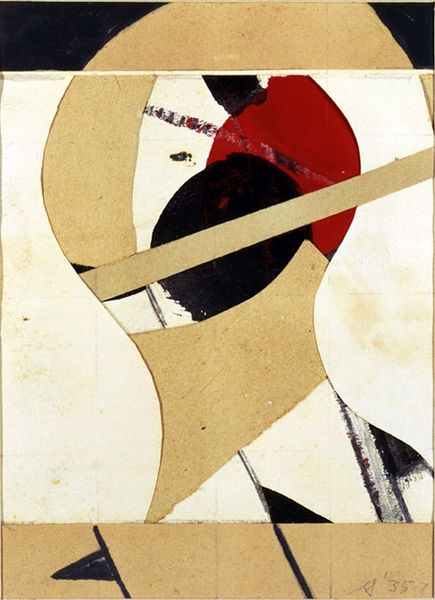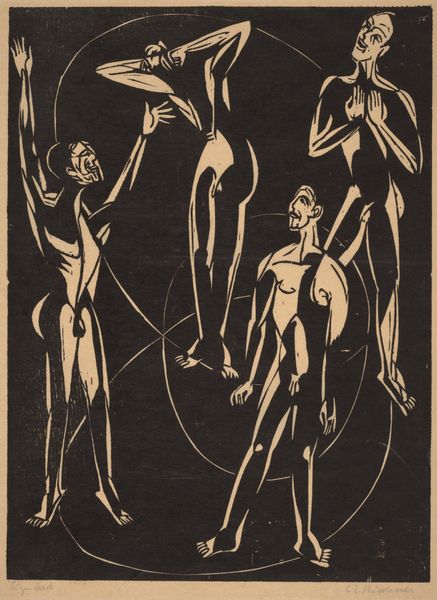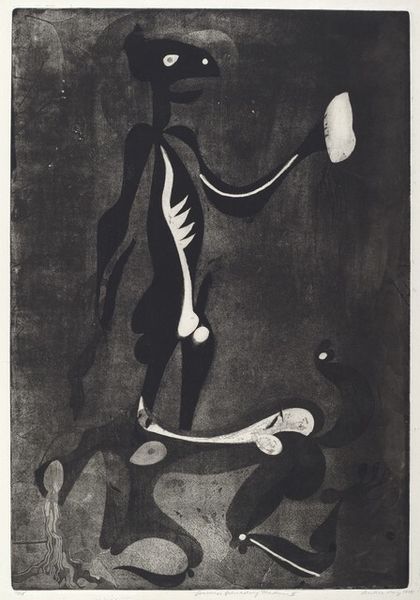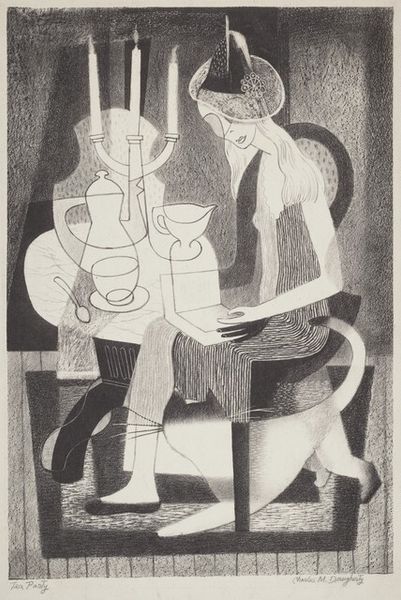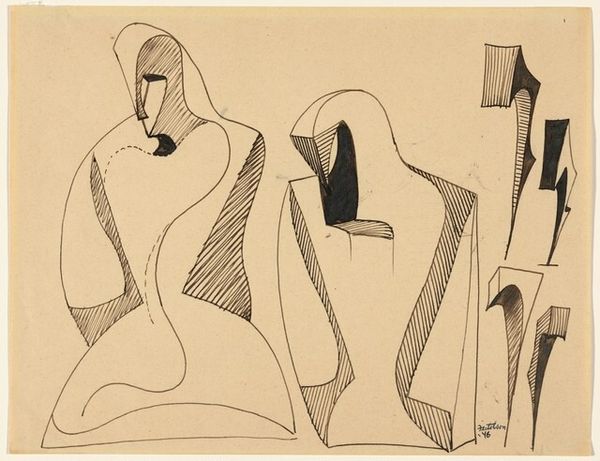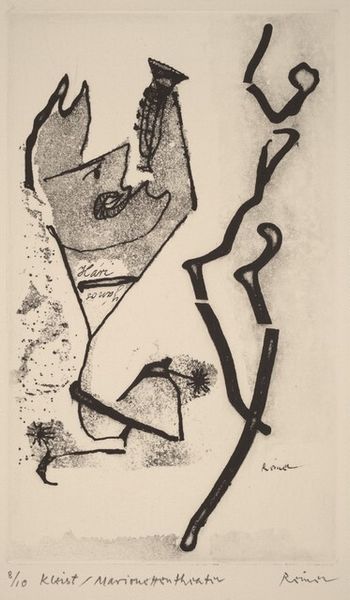
drawing, pen
#
portrait
#
art-deco
#
drawing
#
caricature
#
caricature
#
group-portraits
#
pen
#
modernism
Copyright: Public Domain: Artvee
Curator: We're looking at Ralph Barton's "George Kaufman," created in 1931. It’s a pen and ink drawing, a style he often employed for his caricatures. Editor: My first thought is tension. Look at the geometry of those angled arms, those jutting chins. Even the shadows seem to bristle with disagreement. Curator: Barton worked extensively in the theater world; he designed sets and costumes. I think this informed his style—a theatrical exaggeration, right? What's key for me here is how the industrial boom influenced this work. Mass media like printmaking was a vital influence to expose and give insight into this new leisure class. Editor: Agreed. He uses the exaggeration of caricature, but with a sharp economy of line. Look at how just a few strokes define each character's face. The reduction to essentials emphasizes those planes. It almost feels cubist in its distillation. And look at how these three characters seem locked into this modernist composition of interlinking shapes and figures! Curator: And note that Barton made this drawing during the Depression. Knowing the economic strife happening and that the subject, Kaufman, made a sizable amount of money for his plays on Broadway, we get to appreciate what Kaufman's cultural impact was and how labor can reap considerable financial awards. There's such contrast at play in who this man was and what others may have been facing. Editor: A stark juxtaposition. Speaking formally, I'm intrigued by the monochrome palette. This monochromatic decision pulls our attention to the drawing itself; what might colour suggest? This absence emphasizes line and form and allows those angularities to truly leap forward! It's a world rendered in shadow. Curator: Shadow is a loaded word. Barton suffered from depression and committed suicide not long after creating this piece. I feel we would be remiss not to examine this detail given the period’s economic collapse, the stark imagery, and our present social context. It all bears repeating as a potent reminder about life and struggles that we may need to look at differently. Editor: A dark, yet ultimately thought-provoking encounter. Barton certainly leaves us with something to reflect upon.
Comments
No comments
Be the first to comment and join the conversation on the ultimate creative platform.
